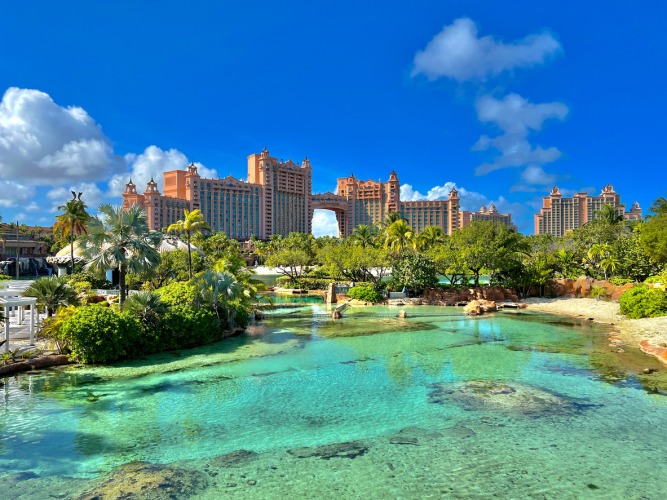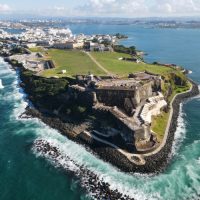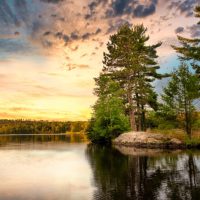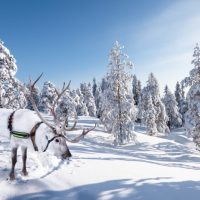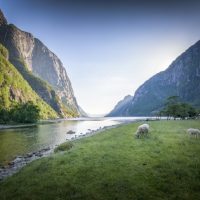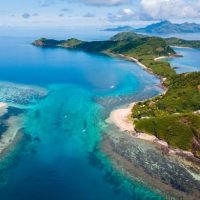The Bahamas is an island located in the Atlantic Ocean.
It attracts thousands of visitors every year.
When people think of the Bahamas, they think of beautiful, hot weather.
And, for the most part, they are correct.
The Bahamas is made up of more than 700 islands and is also home to the world’s third-largest Great Barrier Reef.
Besides these interesting facts, the Bahamas is also home to five different species of snakes.
So, if you’re contemplating visiting the Bahamas, this guide will provide you with useful information about the snake species found on the island, in addition to safety tips while exploring nature.
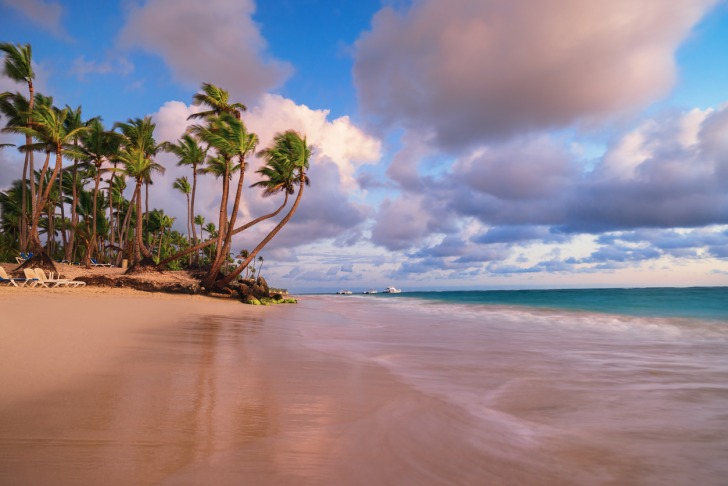
Contents
So, Are There Snakes in the Bahamas?
Yes, the Bahamas is home to five different species of snakes.
Each of these species is made up of additional subspecies.
Several snakes that are found in the Bahamas include blind snakes, pygmy boa snakes, thread snakes, the brown racer, and the Bahamian boa constrictor.
Out of these five species of snakes, the only one known to be venomous is the brown racer, also referred to as the garden snake.
Moreover, you shouldn’t be worried about your safety, as none of the snakes in the Bahamas are dangerous to humans.
Snake Species in the Bahamas
Here is a list of the many snake species that can be found in the Bahamas:
Blind Snake
The blind snake is a very small and thin snake found in the Bahamas.
They can grow to be no longer than 30 cm in length.
Their eyesight is also very poor, hence their name.
They also look very similar to long earthworms.
They have small heads and brown bodies.
Thread Snake
Thread snakes are also tiny snakes.
They typically measure anywhere between four and 12 inches long.
They are very similar to blind snakes in that they have poor eyesight.
These snakes are also non-venomous and are excellent at camouflaging themselves.
They are also more active at night.
Pygmy Boa Snake
The pygmy boa snake is another small snake that can grow to be anywhere between 12 inches and 24 inches long.
They are capable of changing colors through movement.
They are characterized by having a yellow-orange tip on their tails.
They are mainly active during the night and feed mainly on rats, birds, and frogs.
Brown Racer Snake
Brown racer snakes are slim and long.
They are typically no longer than three feet.
They are capable of moving very fast, hence their name.
They are characterized as having hoods on their necks.
They can also vary in color, ranging from dark brown to gray or even black.
These snakes are the most common in the Bahamas.
Bahamian Boa Constrictor
These snakes are also known as fowl snakes and can grow to be as long as eight feet long.
Even though these snakes are not venomous, they can look intimidating.
Their color can alter between gray, tan, or dark brown.
They can be found in forests, brushlands, and mangroves.
They are excellent at climbing and are infamous for being able to climb 16 feet.
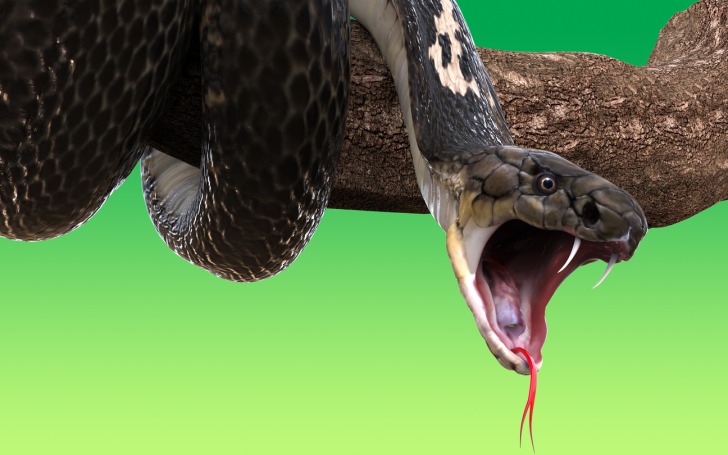
Is it Safe to Go on a Trek in the Bahamas?
Hiking in the Bahamas is relatively safe.
However, there isn’t too much to see, as everything in the Bahamas is low-lying.
The hills and trees aren’t much, but there are rather beautiful trails in the area.
If it has recently rained, you may encounter slippery or muddy spots.
Some of the best trails in the Bahamas that are worth visiting are:
- Sand Dollar Beach Walk Run
- Castaway Cay Forest Loop
- Half Moon Cay Circular
- Lee Stocking Island East and Trails
Snakes are present in the Bahamas.
But besides the possibility of seeing snakes while hiking in the Bahamas, you’ll run into beautiful birds, creepy spiders, tarantulas, and much more.
You’ll also find that there are plenty of mollusks attached to the trees in the Bahamas.
Many of the trails are rustic, and you’ll notice that many of them lead to private beaches.
Hiking in the Bahamas is a real treat, as you’ll get to explore pine forests and marshes and check out plenty of the medicinal plants and flora on the island.
Interesting Snake Facts in the Bahamas
There’s plenty to know about the snakes that call the Bahamas home.
Here is a list of interesting facts about the snakes in the Bahamas:
Many of the snake species in the Bahamas can be as long as 8 feet.
While one snake is considered venomous, none of them are harmful to humans.
The garden snake, the only known venomous snake in the Bahamas, is quite small.
They are no longer than 30 cm.
They contain venom that is only dangerous to frogs and lizards.
The largest and most intimidating snake in the Bahamas is the Bahamian boa constrictor.
However, these snakes are not dangerous.
The brown racer snake is the most commonly found in the Bahamas.
There are no laws in the Bahamas that protect snakes.
The only legislation on snakes is the Wildlife and Conservation Trade Act.
This legislation prevents people from selling, exporting, displaying, and importing snakes.
3 Safety Tips for Exploring Nature in the Bahamas
While hiking and exploring nature in the Bahamas, here is a list of important tips to keep in mind.
- Know your location. Knowing your location matters while exploring nature, even if you consider yourself to be an experienced hiker. If you don’t know the area or trail very well, you may end up running into trouble. So do yourself a favor and plan.
- Avoid interacting with wildlife. No matter where you are, while exploring nature, you should avoid interacting with wildlife that you encounter, including snakes. Most importantly, never try to take a selfie with wildlife.
- Stay hydrated. Be sure to bring enough water with you on your hike. You should have enough water and snacks to last the entire time. Don’t forget to also wear the proper gear for the weather conditions.
Summary
The Bahamas is home to five different species of snakes.
Those snakes are the blind snake, thread snake, pygmy boa snake, brown racer, and the Bahamian boa constrictor.
Snake sightings are common in the Bahamas.
The most commonly seen snake is the brown racer, which is also the only venomous snake in the Bahamas.
However, its venom is only dangerous to other wildlife.
This means you won’t have anything to worry about while visiting and hiking in the Bahamas.
Speaking of hiking, the Bahamas provides ample opportunities to enjoy nature.
Most of the trails lead to beautiful beaches.
Besides beaches, you may encounter spiders, birds, and other wildlife.
The best way to stay safe while enjoying nature in the Bahamas is to know your location and avoid interacting or coming into close contact with wildlife.
The Bahamas Safety Overview
READ THE FULL REPORT: The Bahamas Safety Review
Safety Index: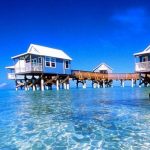
- OVERALL RISK: LOW
- TRANSPORT & TAXIS RISK: LOW
- PICKPOCKETS RISK: MEDIUM
- NATURAL DISASTERS RISK: MEDIUM
- MUGGING RISK: MEDIUM
- TERRORISM RISK: LOW
- SCAMS RISK: MEDIUM
- WOMEN TRAVELERS RISK: LOW
Frequently Asked Questions
Are snakes in the Bahamas endangered?
There isn’t a direct answer to this question.
They may or may not be endangered.
The answer depends on research, and, unfortunately, much of the research isn’t listed on the International Union for the Conservation of Nature’s Redlist of Threatened Species.
However, the Bahamas does have plenty of endemic species.
How long can the Bahamian boa constrictor get?
The Bahamian boa constrictor can grow to be 8 feet long.
However, when the BNT is called to rescue snakes in the Bahamas, they are quite often less than 8 feet.
Are snake sightings common in the Bahamas?
The brown racer snake is the most commonly seen in the Bahamas.
You can also find many of the subspecies on North Bimini and South Bimini.
